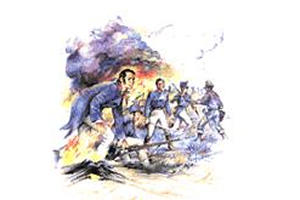In the third chapter of our collection, we have gotten to know the main characteristics of the colonial period.
Political and administrative organization
– The main territorial divisions that existed during Colonial America were viceroyalties, governorates and captaincies and presidencies.
– The Royal Audience was in charge of watching over the compliance and interpretation of laws in America.
– Matters that directly affected the community were resolved in the Cabildo (Council).
Conflicts within the territory
– The war of Arauco lasted nearly two centuries and was characterized by the constant confrontations between the Spanish and the mapuches south of the Biobio river. The conflict went through several stages, stand outs among them being the defensive war, the offensive war and the parliaments.
– During the XVII and XVIII centuries, our coasts were visited by corsairs and pirates, who were looking to get their hands on the shipments that exited the country.
Economy, society and culture
– The main economic activities of the XVII and XVIII centuries were cattle farming and agriculture respectively.
– Mestizos (mix between Spanish and aborigines) were the race that became consolidated during the Colony.
Enlightenment in Chile
– The Enlightenment was a European intellectual movement that had repercussions in our country’s form of administration.
– A few of the governors of the XVIII century were Jose Antonio Mando de Velasco, Manuel de Amat y Junient and Ambrosio O’Higgins.





 Sorpresa de Yerbas Buenas
Sorpresa de Yerbas Buenas